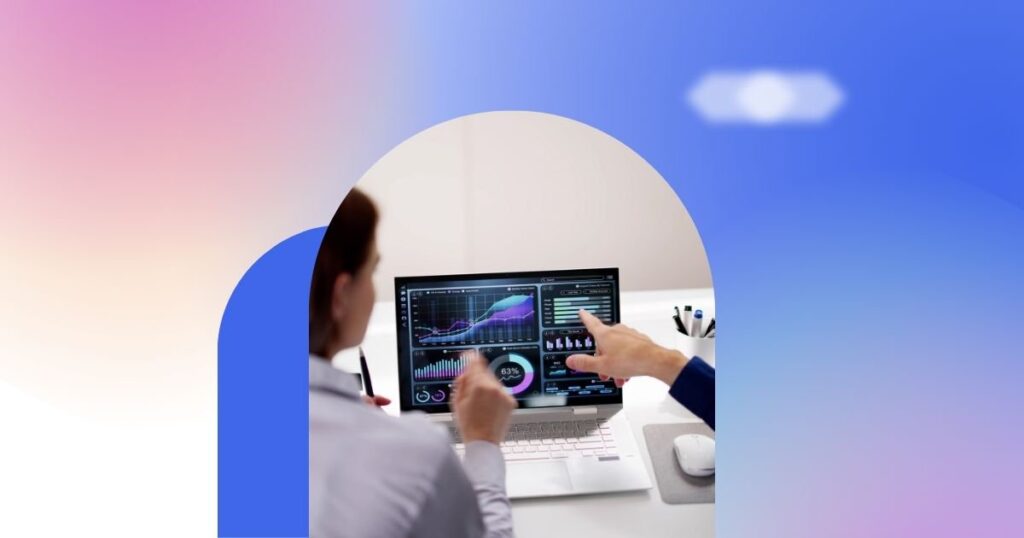Have you ever felt overwhelmed or unclear about how to track and improve performance in your business? For an entrepreneur or manager, having clarity about responsibilities, goals, and metrics is crucial. So, understanding the difference between KRA vs KPI can provide the insight you need to set your team up for success.
Key Responsibility Areas (KRAs) outline the ongoing actions employees should prioritize. Meanwhile, Key Performance Indicators (KPIs) help monitor incremental progress through quantifiable metrics.
Together, KRAs and KPIs provide the clarity and focus needed to make informed decisions. Employees understand their role, and managers can spot gaps, optimize processes, and track performance.
In this blog, we’ll explore what sets apart KRA vs KPI in performance management, how they complement each other, and why tracking both can significantly impact business growth. With the right approach, you can align team efforts, maximize productivity, and make more informed decisions.
Understanding KRAs (Key Responsibility Areas)
KRAs outline the core duties and expectations for a role. They describe what an employee is responsible for in their job.
Some examples of KRAs include:
- Managing a team of sales representatives
- Overseeing daily social media posting and engagement
- Developing financial reports and projections
KRAs should be:
- Clearly defined so employees understand what’s required
- Aligned to broader company goals and priorities
- Communicated regularly to maintain focus
The goal of KRAs is to provide clarity around the ongoing, high-level activities that contribute to business objectives. They keep employees focused on the right tasks in their roles.
KRAs act as a north star, guiding employees and keeping them centered on priorities. Without clear, well-defined KRAs, work can become reactive and fragmented.
By outlining the “what” for each role, KRAs enable employees to focus their time and energy on meaningful activities that ladder up to company success.
Understanding KPIs (Key Performance Indicators)
KRAs define responsibilities, while KPIs provide measurable benchmarks to track performance. KPIs help monitor progress towards goals.
Some examples of KPIs include:
- Sales revenue generated
- Website traffic month-over-month
- Customer satisfaction score
Effective KPIs are:
- Quantifiable and easy to measure consistently
- Connected to targets or objectives
- Monitored at regular intervals to spot trends
The aim of KPIs is to move from subjective impressions of how things are going to objective data that provides visibility, allowing for adjustments as needed.
KPIs take the guesswork out of assessing progress. Rather than vague feelings, managers have concrete metrics to identify what’s working, what’s not, and where to improve.
While KRAs outline expectations, KPIs evaluate outcomes. Together, they create alignment between responsibilities and results.
KRA vs KPI: Key Differences
Organizations use KRAs (Key Responsibility Areas) and KPIs (Key Performance Indicators) to measure performance, but each serves a different purpose.
Here is a table comparing KRA vs KPI differences:

So, KRAs provide high-level qualitative direction while KPIs act as specific, quantifiable performance metrics that track progress on KRAs. KRAs communicate expectations, while KPIs drive actions to meet objectives. Understanding the key KRA vs KPI differences helps delegate organizational tasks and make informed decisions.
How KRAs and KPIs Work Together
Businesses use KRAs and KPIs together to set strategic direction and manage performance effectively. Though different in nature, KRA and KPI for business growth depend on each other to be effective.
KRAs set the overall goals and desired outcomes for an organization, department, or individual. For example, a company may have broad KRAs like "Improve customer experience" and "Increase sales." These KRAs are vital for giving high-level strategic direction, but they need to be made actionable.
This is where quantifiable KPIs come in. The customer experience KRA could have KPIs like "Achieve 80% customer satisfaction score" and "Reduce customer complaints by 20%". For the sales KRA, KPIs may include "Grow revenue by 10% annually" and "Acquire 300 new customers per quarter".
The right KPIs make the KRAs tangible by defining how to measure success. KPI targets give all levels of the organization a way to monitor progress while allowing flexibility in the strategies to achieve the KRA.
In turn, the KRAs provide the context that makes KPIs meaningful. KPIs influence behaviors through what they measure. Without alignment with KRAs, KPIs could drive unintended consequences or suboptimal performance. Connecting KPIs to overarching KRAs unifies metrics with strategy.
KRAs and KPIs work best when developed collaboratively. Executives define strategic KRAs. Then managers propose KPIs that will promote the behaviors and outcomes needed to reach the KRA. This ensures everyone is working towards the same goals.
Regular reviews also help KRAs and KPIs remain synergistic. As KPI targets are achieved, new ones are set. If KPIs are no longer aligned to KRAs, both may need adjustment. KRAs and KPIs must evolve together with changing business conditions.
Why Tracking KRAs and KPIs Is Crucial
Now that we’ve explored the distinct value of KRA vs KPI, let’s discuss why actively tracking both is so important for business growth:
Alignment
KRAs and KPIs create alignment between strategy and execution across all levels of an organization. Leadership sets KRAs to communicate strategic goals. Employees at every level, from the frontline to the C-Suite, have KPIs that ladder up to those goals. This connects organizational priorities to individual actions.
For example, a software company has a KRA of "delighting customers." The product team takes that strategy and tracks KPIs like Net Promoter Score and number of support tickets to understand if they are delighting customers. The marketing team may measure social media sentiment. The sales team looks at renewal rates. Despite different functions, they share a common understanding of success.
Clarity
Well-defined KRAs and KPIs bring clarity to expectations and priorities. Employees know exactly what to focus on rather than guessing what matters most. Resources spent on non-essential tasks are minimized.
KRAs provide a clear mission. KPIs quantify targets, so there is no room for interpretation. For instance, if a KPI is to "Decrease support resolution time by 20%", everyone knows precisely what a good outcome looks like.
Accountability
KRAs and KPIs enable accountability by transparently identifying responsibilities and outcomes. When concrete metrics are established, progress cannot be ambiguous or subjective.
Sales managers are accountable for their team's performance against sales KPIs. Products are developed to impact key product KPIs. This accountability ensures tasks are completed and goals are met.
Motivation
Visible tracking of KRAs and KPIs motivates by providing clarity on progress and opportunities for improvement. Metrics allow people to feel a sense of accomplishment as they work towards targets. Friendly competition can also ensue.
For example, a call center tracks KPIs displayed on monitors. Agents can see their individual progress and how they compare to their colleagues. This fuels their inner drive.
Continuous Improvement
Ongoing tracking of KRAs and KPIs enables data-driven continuous improvement. Trends are monitored. Issues get addressed before becoming crises. Benchmarks help teams understand when and where to improve.
A drop in customer renewal rates would quickly reveal churn issues. This early insight allows for investigation and action before churn gets out of control.
Strategy Optimization
KRAs and KPIs must evolve with changing business conditions. Tracking helps determine when KPIs are no longer the right drivers or when KRA priorities need realignment. Metrics show what is working, what is not, and where strategy optimization is beneficial.
If customer satisfaction KPIs are high but sales grow stagnant, that indicates a KRA change to drive growth may be needed. The data steering strategy is invaluable.
So, diligently tracking KRAs and KPIs is crucial for efficiently executing the strategy. It brings alignment, clarity, accountability, motivation, and continuous improvement. Without KRA and KPI performance tracking, even the best strategies are likely to fail.
Streamlining KRAs and KPIs with Wing Assistant
Implementing a robust performance management framework with meaningful KRAs and KPIs can be challenging. It requires coordination across teams, centralized systems for data collection and reporting, and administrative upkeep. This is where a dedicated virtual assistant from Wing Assistant can make a significant impact.
Wing Assistants are highly trained administrative experts who can take on time-consuming tasks associated with setting up and managing KRAs and KPIs. This allows leadership and strategic teams to focus their energies on analysis, insights, and driving improvements.
Ways a Wing Assistant Provides Value
- KPI Definition and Documentation: Assistants can work with department heads and managers to clearly define and document KPIs that align with organizational KRAs. They can compile KPI measurement methodology, targets, data sources, and other implementation details into a central repository for reference.
- Dashboard Creation: Assistants are experts in data visualization and can build interactive dashboards to track KPI performance. Automated data flows allow for real-time monitoring of metrics across the company through sleek, easy-to-digest visualizations.
- Streamlined Data Collection: Manual data collection is eliminated as Assistants set up APIs, integrations, and reporting tools to feed data directly from source systems into KPI dashboards. Automation saves time and minimizes human error.
- Insights Reporting: Teams are kept informed via summary reports, scheduled emails, and meeting prep documents that provide analysis of KPI trends, progress on KRAs, and recommendations. Assistants synthesize insights so leaders can quickly consume them.
- Review Meeting Coordination: Assistants handle all logistics around scheduling reviews, managing calendars, preparing presentations, documentation and follow-ups to ensure meetings are productive.
- Process Optimization: Assistants are trained in principles like Lean and Six Sigma to identify opportunities for process improvement in KPI/KRA management. They implement centralized tools and best practices.
With Wing Assistant, organizations are empowered with a scalable, efficient system for managing strategic performance indicators. Leaders gain back time each week while KPIs and KRAs remain under watch by skilled virtual assistants dedicated to driving progress on business goals.
Choosing the Right Approach for Your Business
KRAs and KPIs are two pivotal tools for managing business performance, but they serve different purposes.
KRAs (Key Responsibility Areas) are broad, qualitative goals that define the key outcomes an organization aims to achieve. They provide strategic direction in areas like customer satisfaction, revenue growth, and operational excellence.
KPIs (Key Performance Indicators) are specific, quantitative metrics used to measure progress on KRAs. Things like Net Promoter Score, customer churn rate, sales pipeline growth rate, and product defect rates are common examples.
While KRAs communicate the "what," KPIs focus on the "how." Aligning KRAs and KPIs ensures everyone works towards the same priorities. Tracking KPIs provides visibility into progress and opportunities for improvement.
Getting the most out of a KRA/KPI framework requires thoughtful design, central data tracking, and cross-functional coordination. This is where dedicated support from Wing Assistants can help. Our team of experts can handle the administrative workload so you can focus on analysis and strategy optimization.
To learn more about setting effective KPIs and KRAs, explore Wing's services or schedule a consultation. We offer the specialty support needed to drive performance.

Dianne has extensive experience as a Content Writer, she creates engaging content that captivates readers and ranks well online. She stays on top of industry trends to keep her work fresh and impactful. She has a talent for turning complex ideas into relatable stories. When she’s not writing, you’ll probably find her with a crochet hook in hand or working on a fun craft project. She loves bringing creativity to life, whether it’s through words or handmade creations.






